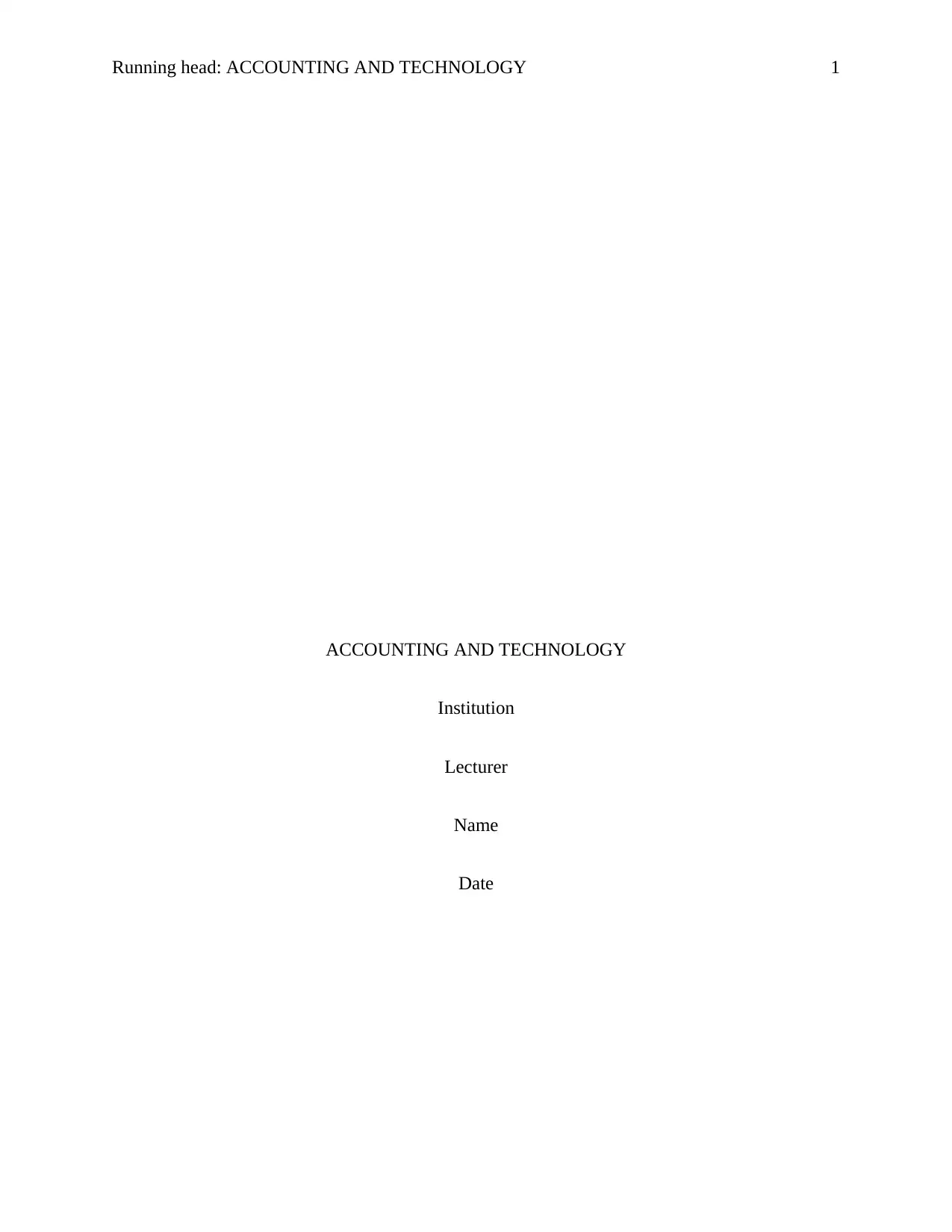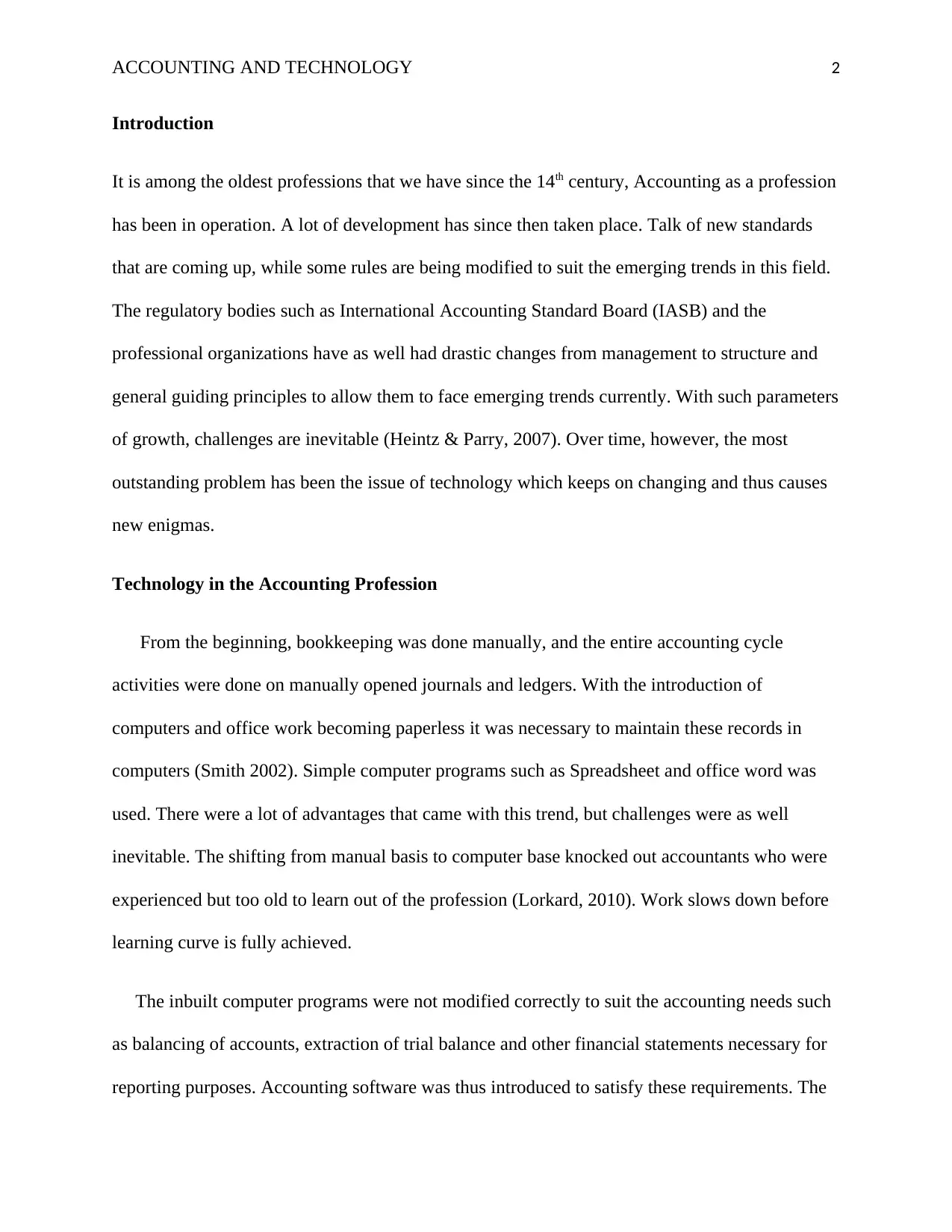Challenges of Accounting and Technology: An Essay Analysis
VerifiedAdded on 2020/03/28
|5
|939
|48
Essay
AI Summary
This essay explores the profound impact of technology on the accounting profession, tracing its evolution from manual bookkeeping to the integration of complex software systems. It highlights the benefits of technological advancements, such as increased efficiency and accuracy in the accounting cycle, while also addressing the significant challenges that have emerged. The essay delves into issues like the displacement of experienced accountants due to the learning curve associated with new software, the manipulation of financial data through accounting software, and the risks of data breaches and hacking, using case studies such as Enron, Parmalat, and Neiman Marcus to illustrate these points. It also discusses the challenges of software customization, constant upgrades, and the potential for data loss. The essay concludes by emphasizing the ongoing importance of technology in accounting while acknowledging the need for ongoing adaptation and risk management to mitigate the challenges that arise from its application.
1 out of 5









![[object Object]](/_next/static/media/star-bottom.7253800d.svg)